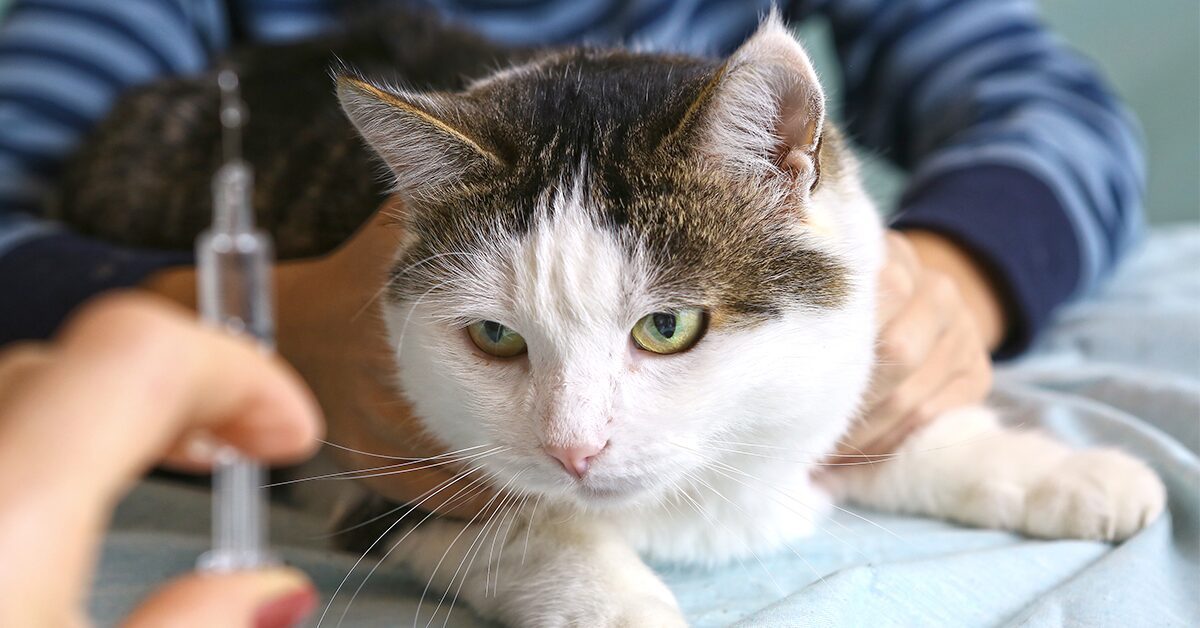Diabetes affects both cats and dogs, but it looks different by species. Early recognition reduces complications and supports stable daily routines. This guide explains clinical signs, testing, care planning, and when to seek urgent help. We also compare feline patterns with canine diabetes to clarify what to watch for at home.
Key Takeaways
- Early signs: thirst, frequent urination, weight loss despite appetite.
- Diagnosis uses glucose testing, urinalysis, and trend-based monitoring.
- Treatment pairs insulin, diet structure, and routine checks.
- Complications like ketoacidosis need urgent veterinary attention.
Recognizing Canine Diabetes and Feline Diabetes Basics
Diabetes mellitus is a chronic endocrine disease marked by high blood sugar. In dogs, beta-cell loss typically drives an insulin-deficient state. In cats, insulin resistance plays a larger role, and remission may occur with early control. Despite these differences, both species share hallmark signs: polyuria (frequent urination), polydipsia (excess thirst), polyphagia (increased appetite), and weight loss.
Understanding baseline behavior helps owners notice subtle shifts. Track water intake, litterbox or outdoor elimination, and appetite across weeks. A sudden increase in drinking or accidents indoors often appears before weight changes. For a deeper clinical overview of disease mechanisms, see the Merck Veterinary Manual, which summarizes species differences and standard concepts of care Merck Veterinary Manual.
Early Warning Signs in Dogs
Owners often search for diabetes in dogs: symptoms when daily routines start to change. Common signs include more frequent urination, empty water bowls, and weight loss despite normal or increased appetite. Your dog may seem hungrier yet lose muscle over the back and thighs. Mild lethargy can follow, and some dogs develop a dry, dull coat.
Progression varies. Watch for urinary accidents, nighttime restlessness for water, or recurring urinary tract infections. If glucose runs high for weeks, lens changes can lead to cloudy eyes and vision problems. For context on high blood sugar behavior and risks, see our overview of Hyperglycemia in Dogs, which explains patterns and related complications to track at home.
Early Warning Signs in Cats
In cats, early signs can be subtle because many nap and drink when owners are away. Clues include heavier clumping in the litterbox, frequent water bowl refills, and gradual weight loss despite stable appetite. Some cats show hindlimb weakness from diabetic neuropathy, walking flat-footed with a plantigrade stance.
Grooming changes and a greasy coat may appear as energy wanes. You may also notice more vocalization around feeding times. If you suspect trends, start a daily log of appetite, water intake, and litter changes. For a focused feline overview, see our guide to Signs and Symptoms in Cats, which outlines additional nuances across ages.
How Vets Confirm the Diagnosis
Clinicians combine history, exam findings, and laboratory data to confirm disease. A single high glucose reading is not enough; stress, pain, or medications can transiently elevate glucose. Urinalysis that shows glucose and possibly ketones supports persistent hyperglycemia. Serial readings, blood glucose curves, and fructosamine (average glucose proxy) help verify trends across days.
Owners often ask how to diagnose diabetes in dogs when signs overlap with kidney or thyroid disease. Veterinarians may repeat testing to rule out temporary spikes, add fructosamine, and screen for concurrent issues. For consensus-based workups and monitoring intervals, see the AAHA diabetes management recommendations AAHA guidelines. If insulin is later prescribed, your care team will teach technique, timing, and safe handling before the first dose at home.
Treatment Options and Ongoing Monitoring
Treatment aims to reduce clinical signs, keep glucose in a safe range, and maintain quality of life. In most dogs, insulin therapy anchors the plan, paired with consistent feeding and activity. Your veterinarian will individualize the product choice and dosing schedule. Regular rechecks refine the plan using body weight, clinical signs, and periodic glucose curves.
Owners sometimes search for diabetes in dogs treatment to understand expected steps. Practical care includes injection training, hypoglycemia preparedness, and a clear monitoring routine. For insulin selection and handling specifics, see our Humulin N Insulin Guide, which explains canine use and monitoring goals. For labeled feline therapy details that may inform cat care conversations, the FDA’s ProZinc label provides key safety and use information FDA label, and our ProZinc Vial page outlines product specifics owners commonly review.
Nutrition and Meal Planning
Feeding structure supports insulin action and helps stabilize daily glucose. Diet composition and timing should remain consistent from day to day. Veterinary diets with controlled carbohydrates and balanced fiber are often recommended; some dogs do well on measured, calorie-appropriate maintenance diets. Talk with your veterinarian before changing food, treats, or feeding times.
Owners frequently ask about diabetic dog food and whether special formulas are necessary. The answer depends on comorbidities, body condition, and your dog’s response to insulin. Home-prepared diets can work with veterinary nutrition guidance, but unsupervised recipes risk imbalances. For practical reading on diet patterns and related conditions, browse our curated Diabetes Articles, which collect feeding, monitoring, and lifestyle topics across species.
Complications and When to Seek Urgent Care
Complications arise when glucose control swings too high or too low. Hypoglycemia can cause weakness, tremors, disorientation, or seizures. Offer a fast-acting sugar source only if your veterinarian has instructed you to do so, and contact a clinic immediately. Keep a written emergency plan, including the nearest 24-hour hospital and your pet’s current medications.
Persistent high glucose can lead to dehydration, infection risk, and diabetic ketoacidosis (DKA). DKA presents with lethargy, vomiting, rapid breathing, and acetone-like breath. This condition is a medical emergency requiring hospital care. For a deeper look at red flags and triage steps, see our guide to Diabetic Ketoacidosis in Dogs, which outlines symptoms, causes, and veterinary stabilization priorities.
Costs, Access, and Practical Planning
Budgeting helps owners stay consistent with care. Total costs include insulin, syringes or pens, glucose monitoring supplies, recheck visits, and diet. The dog insulin cost varies by product, dose, and source. Ask your clinic about options, including vial-versus-pen format, and how long opened products remain within labeled stability windows.
Some owners prefer remote coaching and predictable refill cycles. Others schedule in-clinic glucose curves until routines settle. Building a calendar for checks and supplies reduces rushed decisions. To explore equipment and related items, browse our Diabetes Supplies section for an overview of categories and common accessories used in veterinary care.
Prevention and Risk Factors
Body condition, age, underlying disease, and some medications can raise risk. In dogs, pancreatitis and immune-mediated damage often precede diabetes. In cats, obesity and insulin resistance commonly drive disease. Genetics play a role in some breeds, while spayed females are overrepresented in dogs.
Owners often ask what causes diabetes in dogs when planning lifestyle changes. Keep your pet at an ideal weight, manage pancreatitis risks, and review medications that may influence glucose. Routine wellness screening can catch early changes, especially in seniors. For broader strategies that reduce risk across species, our overview on Preventing Diabetes in Pets highlights practical steps you can take at home.
Recap
Diabetes is manageable with structure, patience, and regular communication with your veterinary team. Early recognition, confirmation through trend-based testing, and consistent routines make the biggest difference. Track water intake, urination, appetite, and weight, then bring your notes to appointments. These observations help your veterinarian tailor insulin plans, diet, and monitoring intervals over time.
When questions arise, consult resources that match your pet’s species and stage of care. For topic-by-topic reading, our Pet Health collection gathers practical guides for common conditions. For deeper diabetes content across dogs and cats, the Diabetes Articles hub organizes testing, treatment, and complication management in one place.
Note: If your pet shows severe lethargy, vomiting, collapse, or seizure activity, seek immediate veterinary care or emergency services.
This content is for informational purposes only and is not a substitute for professional medical advice.


